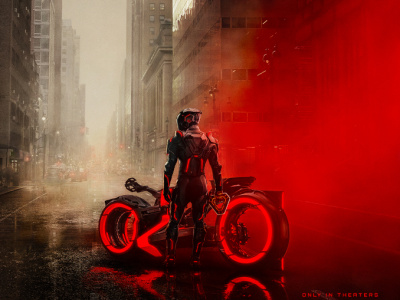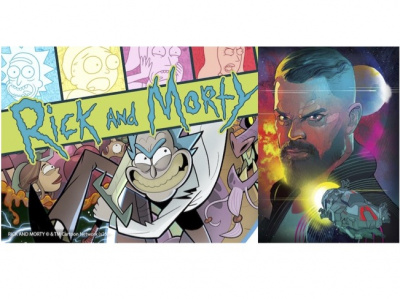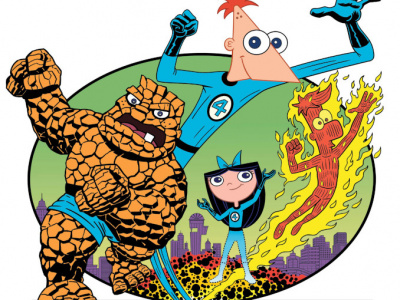
This year marks 25 years since Dark Horse first started publishing manga. We took the opportunity to talk to Dark Horse CEO Mike Richardson about his recollections of the dawn of manga in the U.S. and the years since.
What’s your first recollection of seeing manga--the title, the circumstances, and your reaction?
I had seen bits and pieces of assorted Japanese comics, but the first solid memory I have of an actual Japanese comic series was Weekly Manga Action featuring Lone Wolf & Cub--although that American title had not yet been invented. As a fan of Kurosawa's films, I was immediately attracted to it.
I understand this is the 25th anniversary of Dark Horse publishing manga--what was the first Dark Horse manga title?
Manga was around, but unlike anime, hadn't really created much of a stir. The first manga title for us was Godzilla, a comic based on the Japanese film, The Return of Godzilla. There were only three or four people at Dark Horse at the time we acquired the license and we didn't have many contacts. We had trouble finding a translator for the series so I ended up taking issues 1, 3, and 5 home while Randy Stradley took issues 2, 4, and 6. We translated the series ourselves based on the art... and years of watching the assorted Godzilla films.
What was the environment for manga in the U.S. when Dark Horse started publishing it--what else had been done?
There were several series that had been or were being released in the states. Eclipse was producing manga titles and First Comics was releasing Lone Wolf & Cub. I was working my stores in those days and always kept Keiji Nakazawa's Barefoot Gen on my shelves.
What else did you do in the first couple of years?
I started making regular trips to Japan and picking titles by going into the larger bookstores and spending hours looking through potential titles. I couldn't read Japanese, so I made my choices based on the art and the clarity of the panel to panel storytelling. It wasn't long before we teamed up with Toren Smith who really had his finger on the market in those days, and he would bring me titles he thought I'd be interested in to choose from. It was a great partnership and we built a solid line of books.
What are your main recollections about the manga market in the 90s?
For us it was a great decade manga-wise. We acquired the license for Katsuhiro Otomo's Akira, Masamune Shirow's Ghost in the Shell, and, after a ten year effort, Kazuo Koike and Goseki Kojima's Lone Wolf & Cub. Those books sold very large numbers. In fact, we gave new life to the Lone Wolf & Cub series. Many of the people I knew in Japan warned me that samurai comics were dead, and there initially was a squawk over here about the format I had chosen. My faith in the material was rewarded by the sales of the series which is well over a million copies sold.
How about the 2000s?
The 2000's saw a big increase in comic sales, almost entirely fueled by shojo manga and primarily focused in traditional bookstores. It's an interesting story how the boom came about. An American publisher, suffering through some hard financial times, started picking up inexpensive Japanese comics material. You have to remember that in the late '90s, most comics were sold in comic shops. Eighty to 90% of the customers found in those shops were male. For Dark Horse, putting aside my own personal preferences, this meant finding manga that would appeal to the comic market's customer base. As a result, our manga line had a strong seinen bias, that is, comics for males in the 18 - 35 category. Dark Horse, as well as other American publishers, did not pursue shojo, which were comics intended for young female teens.
As a result, the publisher I mentioned earlier [obviously speaking of Tokyopop, ed.] was able to pick that category up cheaply. While comic shops preferred the books to be westernized, this publisher avoided the cost of flipping the books western style by letting them read in their original right to left format and calling the approach "authentic," a brilliant marketing move. Finally, he made a deal with one of the big chain buyers to stock the books and the manga craze was on its way.
I didn't believe it when I heard that girls were sitting on the floors of bookstores reading manga. I headed out to one of the chains and to my surprise ti was exactly as I was told... a half dozen teenage girls sitting on the floor and reading manga. By the end of the decade the craze had died. This was due to a variety of reasons... glut of product, fewer quality titles, and the aging of the primary shojo readership.
How do you assess the current manga market in the U.S.?
Obviously, manga has cooled. The weaker titles won't cut it any longer. There are still very strong titles and as always is the case, it's the quality work that will maintain readership.
What manga are you most excited about at Dark Horse this year?
Well, we're planning to announce a big title at Sakura-Con. We have new Clamp titles, something from Kazuo Koike that's very close, and of course books by creators such as Amano and Nightow.
What can retailers do to help stimulate the manga market?
They can make room on their shelves for more manga. It's up to us to offer the best books we can and support the retailers with strong marketing. It's up to the retailers to pay attention to which manga books make sense for their stores.







